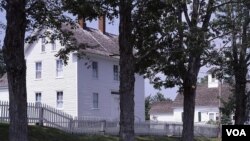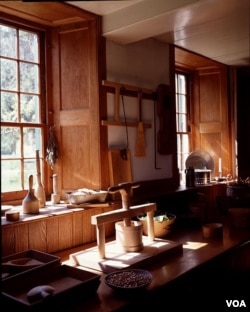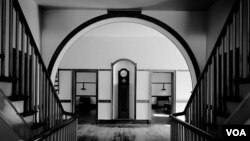One of the swankiest suburbs of Cleveland, Ohio, is Shaker Heights, and it’s not named for any kind of food shaker or for a Mister Shaker.
Nor are Shakertown, Kentucky; Hancock Shaker Village in Massachusetts; or Sabbathday Lake Shaker Village in Maine.
They were all once communal settlements of an ultra-strict religious sect that got its name from its followers’ exuberant dancing.
There are only two, possibly three, members of the Shaker religious band still alive. Nobody outside the private community where the women are cared for in Maine knows the number for sure.
Two hundred-thirty-eight years ago, Ann Lee - the charismatic British founder of the sect - formally called the United Society of Believers in Christ’s Second Appearing - moved, along with eight of her followers, to the United States.
Together, they began founding communal settlements from Maine in the Northeast to Kentucky in the mid-South.
Onlookers called them “Shakers” as they watched these true believers twitch and clap loudly - shaking off the sins of the world as they sang and danced.
President James Monroe, who stopped at a Shaker settlement in the 1820s, noted in his journal that, "The singers began increasing the violence of their actions as they were warmed by the Spirit."
Shakers emphasized honesty, hard work, and simplicity. Shaker missionaries walked the countryside, seeking converts.
New members were essential, because the Shakers lived as celibate brothers and sisters.
There would be no children born to build the ranks - which helps explain why you can count the remaining Shakers on one hand.
But Shakers embraced some earthly pleasures, such as music on the Victrola phonograph, automobile travel, and a glass or two of beer. Kentucky sourmash bourbon, too, at the Shakertown settlement in South Union, Kentucky.
They made their living by selling high-quality garden seeds and making fruit preserves, straw hats and brooms, oval boxes, and distinctive wooden furniture whose simple designs still inspire the so-called Shaker style.
After the U.S. Civil War of the 1860s, tens of thousands of Americans headed westward in search of fortunes and a new life, and lots of Shakers left the fold to do likewise. It was the beginning of a steady decline of their sect.
Some Shaker settlements became museums and still draw visitors, curious to find out what all that moving and shaking were about.









